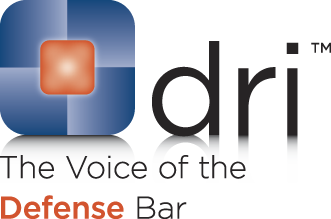 In 1977, the Jacksons bought a home. Over time, small cracks appeared in the walls. The Jackson’s investigating engineer said that the home had suffered structural damage because of negligent construction.
In 1977, the Jacksons bought a home. Over time, small cracks appeared in the walls. The Jackson’s investigating engineer said that the home had suffered structural damage because of negligent construction.
The Jackson’s homeowner policy was with State Farm. State Farm disagreed with the Jacksons. State Farm said that the loss was from earth movement. The State Farm policy in place at the time the Jacksons reported the damage excluded coverage for both negligent construction and earth movement. However, the policy in place when the Jackson’s first bought the house did not exclude damages for negligent construction.
When State Farm denied coverage on the homeowner’s policy the Jacksons sued. The Jacksons argued that the first policy issued to them by State Farm should control and since their engineer said that the damage was caused by negligent construction, then it should be covered. The trial court said no and found in favor of State Farm.
In Jackson v. State Farm Fire and Cas. Co., 108 Nev. 804, 835 P.2d 786 (1992) the Nevada Supreme Court considered the Jackson’s appeal. State Farm argued in favor of the adoption of the “continuous exposure” rule. California Union Ins. Co. v. Landmark Ins. Co., 145 Cal.App.3d 462, 193 Cal.Rptr. 461 (Ct. App. 1983). Under that rule, the carrier in whose policy period the progressive damage first became apparent would remain on the peril until the damage was finally and totally complete, even if the policy tried to limit the exposure. Under this rule, the various insurers would apportion the loss from the date of first occurrence to the date of discovery by the insured. Prudential LMI Ins. v. Superior Court, 51 Cal.3d 674, 274 Cal.Rptr. 387, 798 P.2d 1230, 1243 (1990). That would have meant that State Farm was on the loss for only a small period of the time.
On the other hand, the Jacksons argued for the “manifestation rule”. Under that theory, the carrier whose policy was in effect when the damage was first manifest is liable for the loss. Id. In other words, if the Jacksons could prove (1) that the loss first manifested itself while State Farm policy that did not exclude negligent construction was in force AND (2) that the loss was caused by negligent construction and not simple earth movement, then State Farm would have to pay.
The Nevada Supreme Court decided that in the first-party context the “manifestation rule” was the better rule. Quoting the case of Home Ins. Co. v. Landmark Ins. Co., 205 Cal.App.3d 1388, 253 Cal.Rptr. 277, 282 (Ct. App. 1988) the court said
The manifestation rule in the first party context promotes certainty in the insurance industry and allows insurers to gauge premiums with greater accuracy. Presumably this would reduce costs for consumers because insurers will be able to set aside proper reserves for well-defined coverages and avoid increasing such reserves to cover potential financial losses caused by uncertainty in the definition of coverage.
The case went back to the trial court to determine when the loss first manifested itself and which policy was in effect at that time.
The question of whether the “manifestation rule” or the “continuous exposure rule” would apply in a third party context has yet to be decided in the State of Nevada. See Gary G. Day Construction Co., Inc., v. Clarendon America Ins. Co., 459 F.Supp.2d 1039 (2006). Nevertheless, let Mills & Associates help you with your coverage issues. Call Mike Mills at 702‑240‑6060 x 114 and discuss your questions.
 Follow
Follow Email
Email



[…]Nevada Adopts the Manifestation Rule in First Party Property Cases involving Progressive Damage. | Nevada Coverage and Bad Faith Law|http://www.ez-on-web.com[…]